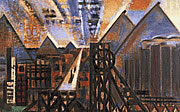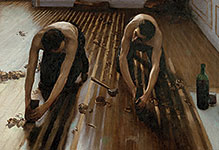
Daily Life
Work, Leisure, Clothing and Textiles, Politics and Portraits, Furniture, Houshold, Funerals, Death, Murder, Family.

#03030333
Decorated bone pin, Early Aurignacian period, about 34,000 years old. Deliberate...

#03030341
The Mold gold cape, Bronze Age, c1900-c1600 BC. The cape is one of the finest ex...

#03030353
Burial chamber of an adolescent male lying in a bed of red ochre with a large nu...

#03030354
Burial chamber of "Man of Menton" from the caves of Balzi Rossi. Bones and soil...

#03030357
A Neanderthal tomb burial from La Chapelle aux Saints, France, dating from about...

#03030360
Beaker burial from Shrewton; 2000 BCE. A 'Beaker' period burial from an Early B...

#03030369
Weaving combs made of bone. Finds from the early phase of the Iron Age, corresp...

#030304 1
Cult complex "Soborul zeitelor" of Poduri (Assembly of Goddesses). 21 clay idols...

#03030425
Bronze fibula from the necropolis of Orainville (Aisne, France). 3rd century BCE...

#030401 8
Portrait of Shah Abbas I,Isfahan,Iran,March 12,1627 with one of his concubin...

#030401 9
Fath Ali Shah (1762–1834), the secong Qajar King of Persia from 1797 to 1834, ne...

#03040115
Basalt tombstone of Isa B Ahmad al-Akki, Dahlak Archipe- lago, Red Sea, 1188. It...






